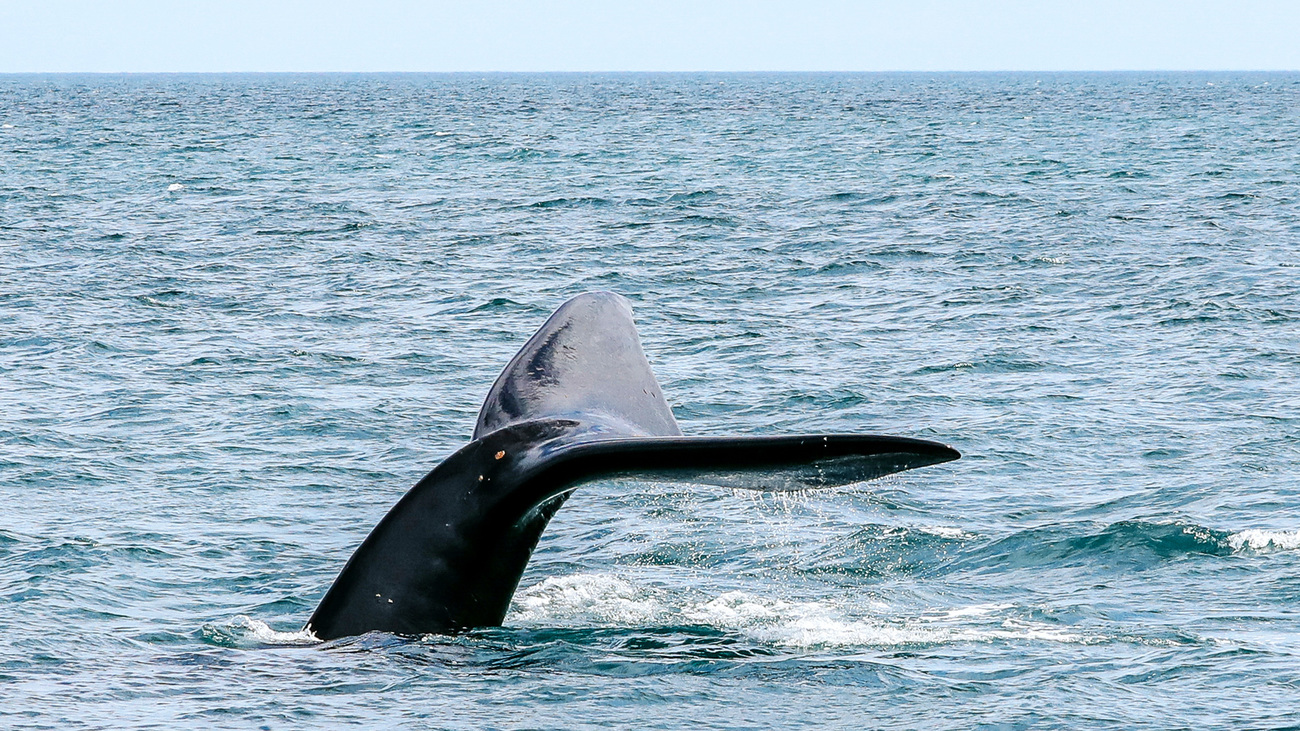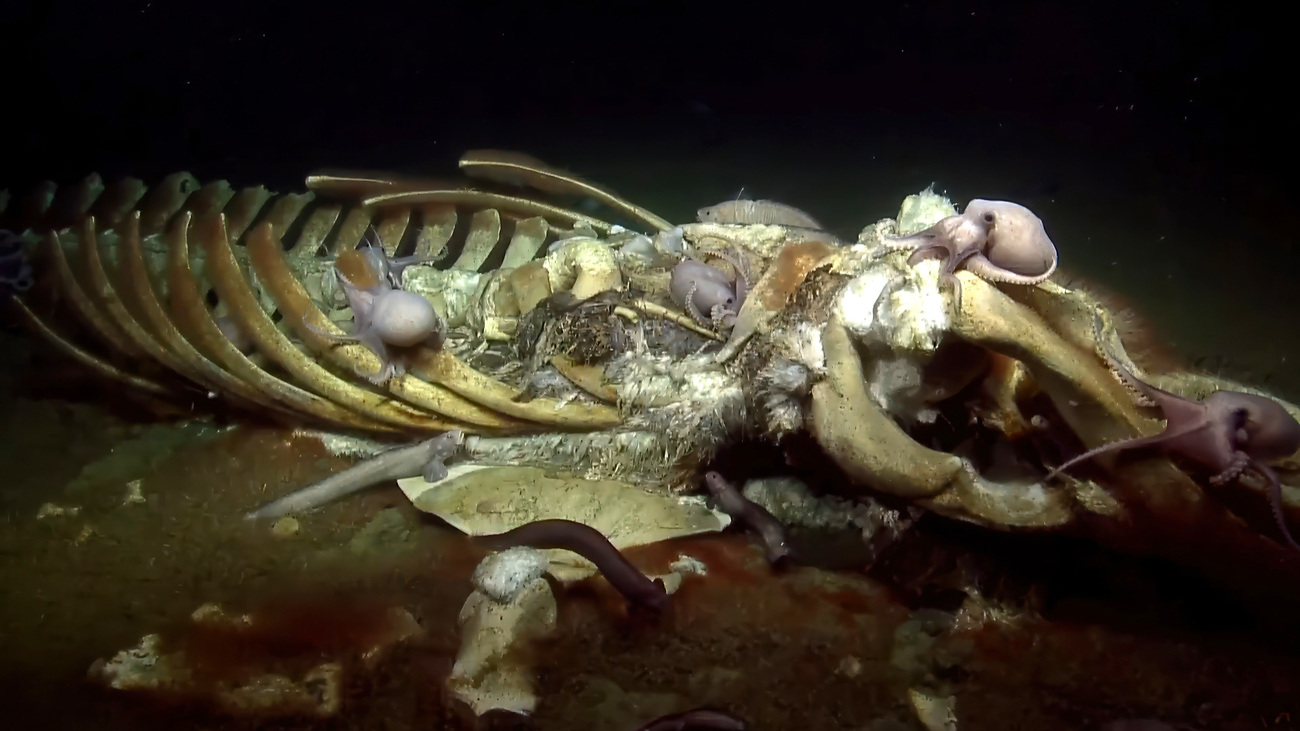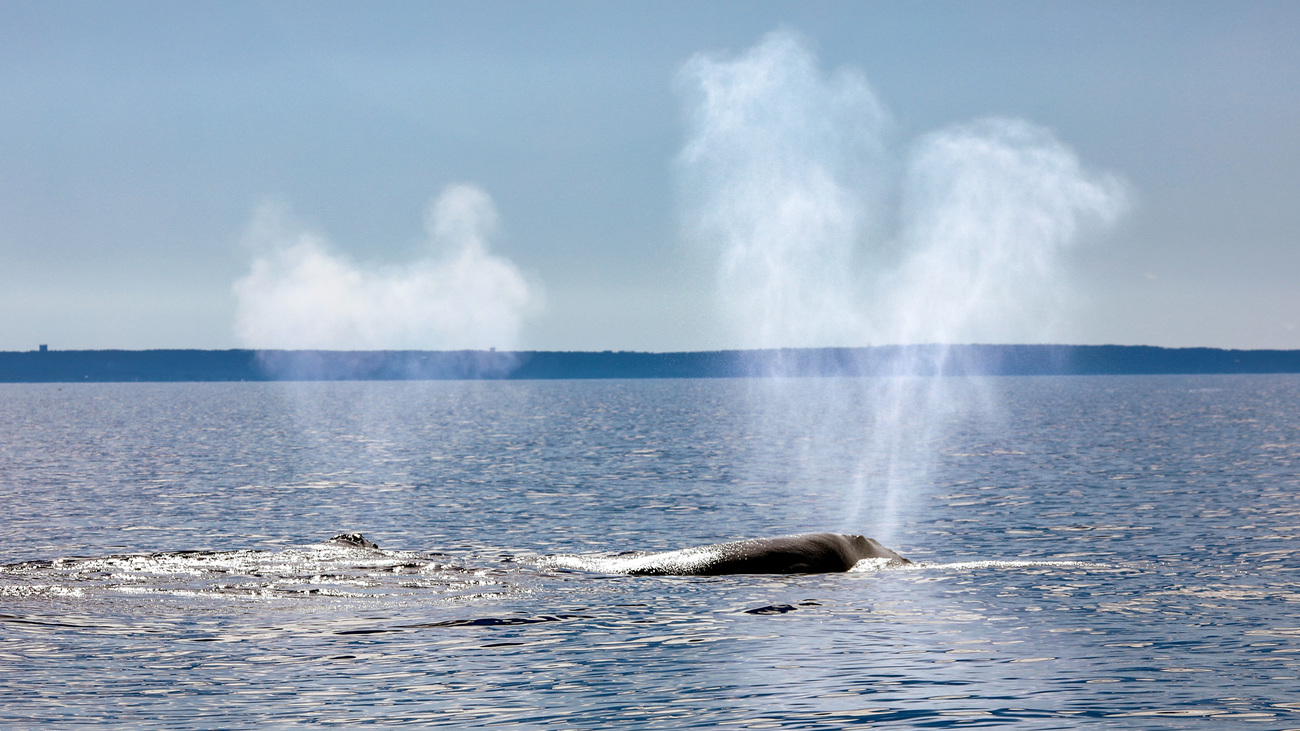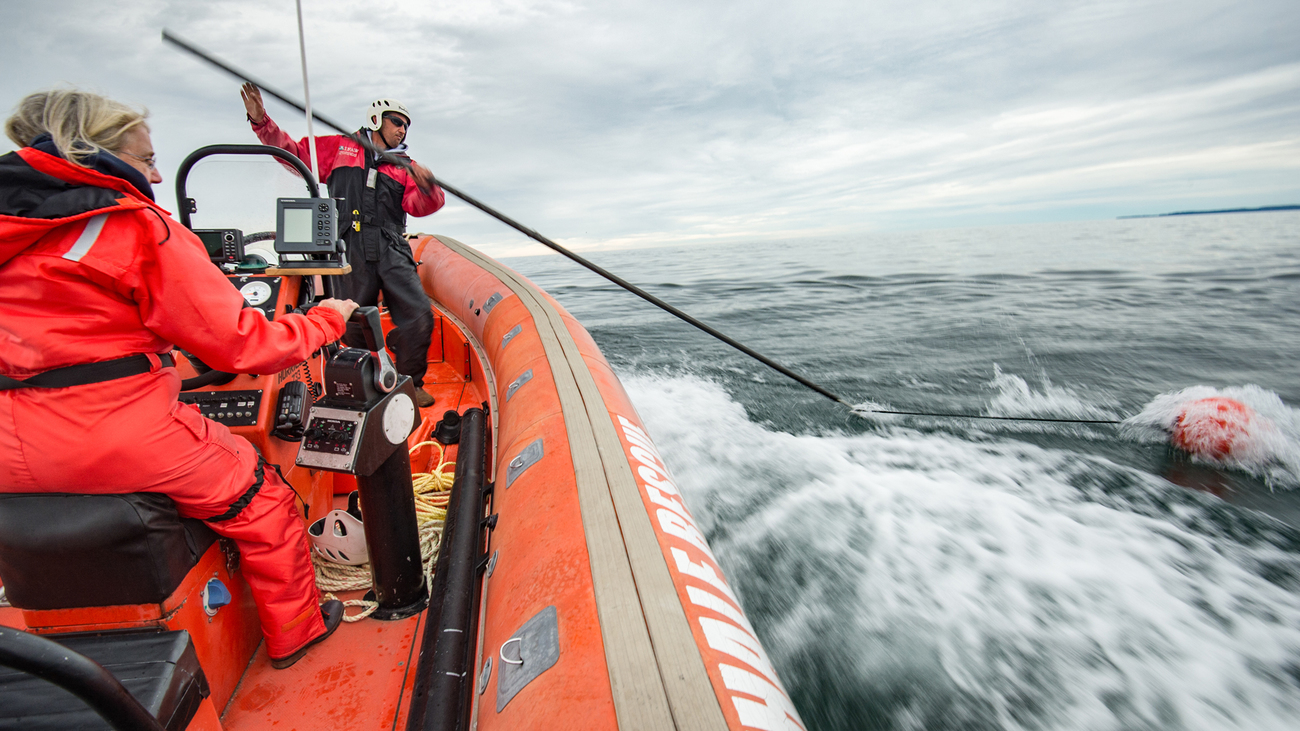Saving the North Atlantic right whale - North America
Don't fail our whaleWhy we can’t let the North Atlantic right whale go extinct
Why we can’t let the North Atlantic right whale go extinct
Imagine an ocean teeming with life—from the largest whales down to the smallest microbes, and every species in between—all feeding and sustaining each other in the delicate balance that we call the marine food web.
With only around 370 of these magnificent creatures left—and only 70 being females capable of reproducing—North Atlantic right whales are critically endangered. They are dying so quickly and reproducing so slowly that they’re projected to be functionally extinct by 2035. Losing this whale species would only be the first of many others that face the same threats to their survival.

That’s why it’s so important that we understand how important whales are, ask ourselves what the ocean would look like if they disappeared, and then do everything in our power to stop it from happening.
How do North Atlantic right whales protect the ocean’s biodiversity?
Like all whales, North Atlantic right whales play an essential role in protecting the ocean’s biodiversity in several ways.
1. By keeping plankton populations healthy
First let’s look at some of the smallest organisms in the ocean: plankton. These tiny organisms float through the water, but they have a tremendous effect on the ocean—and even on the atmosphere we all breathe.
Phytoplankton are microscopic plants that form the basis of the oceanic food web. Like plants on land, phytoplankton use photosynthesis to convert the sun’s rays into energy. Part of that process is absorbing carbon dioxide and producing oxygen, which we humans need to breathe. Phytoplankton live close to the water’s surface so they can absorb sunlight. By absorbing carbon dioxide, phytoplankton help create a carbon sink—when they die, the carbon is sequestered deep in the ocean—which is critical for mitigating climate change.
Zooplankton are tiny animals, many of which consume phytoplankton and each other. As consumers, they help keep the phytoplankton population under control. Without enough zooplankton to eat phytoplankton, the ocean can experience harmful algae blooms that hurt lots of species, including humans. Too many zooplankton would mean a drastic reduction in phytoplankton absorbing our CO2 and producing oxygen for us.
North Atlantic right whales are baleen whales that feed on zooplankton. In fact, they can eat as much as 1,100 kilograms (2,400 pounds) of zooplankton in one day. By keeping the level of zooplankton under control, they help maintain a healthy balance of phytoplankton.
2. By spreading nutrients wherever they swim
Many North Atlantic right whales migrate huge distances, from Canada’s Bay of Fundy (foraging grounds) to Florida (calving grounds) and back again. One whale, Porter, was even seen in northern Norway in September 1999 before again being seen in Cape Cod, Massachusetts in winter 2000. He had travelled 11,500 kilometres (7,120 miles)!
As right whales swim, they spread nutrients through the water, both horizontally through their migration and vertically as they dive deep and resurface.
One way they spread nutrients is through their poo. Right whales’ faecal plumes contain nutrients like nitrogen and iron that act like fertiliser for phytoplankton, the basis of the marine food web.
3. By becoming a food source and habitat after they die
When they don’t die on land due to stranding, whales’ bodies sink to the ocean floor—a process known as a whale fall—they become a new habitat and food source for deep-sea creatures. Their bodies are full of nutrients that not only nourish plants and animals but also enrich the sediment around them. While scavengers feed off their soft tissue in a matter of months, their bones support deep-water communities for decades. Whales’ bodies can also sequester carbon for hundreds, if not thousands of years after they die.

What would the ocean look like without whales?
Losing whales would be devastating for many reasons. Sadly, North Atlantic right whales sit on the brink of extinction, and all other whale species face the same threats that they do. North Atlantic right whales would be just the first in a series of extinctions that would be disastrous for the ocean’s health.
The first thing we would probably notice if we lost whales is a sudden imbalance in the food web. An increase in zooplankton would lead to bigger populations of other fish that feed on zooplankton. While that might seem beneficial at first, the increase in competition for this food source would lead to some fish species declining while others become overabundant. The imbalance would gravely affect large predators, like sharks, tuna, and seabirds. Eventually, it could also damage the stocks on which the fishing industry and coastal communities rely for their livelihoods and food sources.
The balance between zooplankton and phytoplankton would also be thrown off. With more zooplankton eating phytoplankton, and without right whale poo fertilising phytoplankton, the very foundation of the marine food web would crumble.
Without migrating whales cycling nutrients wherever they go, some areas could become nutrient-poor dead zones, which would impact every species living there. Those habitats could lose their more complex species, making them less diverse as only certain species would be able to survive. Entire ecosystems could then collapse.
Without whale bodies falling to the ocean floor, there would also be fewer microhabitats and nutrients for the deep-sea species that rely on them. Those food webs could be disrupted, and we could lose species at every level of the ocean.
What could the ocean look like if whales thrived?
Thriving whale populations would support a thriving ocean.
With so much nutrient-rich whale poo to fertilise the surface waters, phytoplankton could flourish, supporting countless other species that rely on them either directly or indirectly. All levels of the food web, from zooplankton to large predators, could be nourished and become more diverse and abundant.
A balanced zooplankton population would mean other fish species also thrive. This could help ensure the entire food web is strong and robust, better capable of withstanding unexpected shocks and environmental changes.
Whales’ movement through the water could ensure nutrients reach more habitats, and they themselves could create thriving microhabitats after living a long life of their own. Whether their bodies were alive and moving or dead and decaying, they could support a diverse array of sea life.
From the ocean’s surface to its floor, the entire marine ecosystem could be far more resilient, and so would the people and economies that rely on it.
Why are whales important for our own survival?

Phytoplankton is one of our planet’s greatest oxygen sources, so the consequences of it decreasing would be devastating. In fact, more than 50% of the air we breathe is produced by the ocean, particularly by phytoplankton. By fertilising phytoplankton and keeping the zooplankton population balanced, right whales help us all breathe easier.
We already know that phytoplankton, like other plants, absorb CO2 from the atmosphere—but so do whales! Whales capture and store carbon in their bodies throughout their lives. Healthy populations of just nine different types of animals, including whales, could lead to the capture of 6.41 gigatons of CO2 every year, which is 95% of the CO2 that needs to be removed from the atmosphere to ensure global warming remains below 1.5°C.
That’s why thriving whale populations could help us mitigate the devastating effects of climate change. Saving the North Atlantic right whale from extinction is just one step in the fight to protect all whales.
What is threatening North Atlantic right whales, and how is IFAW fighting to save them?
Sadly, so many North Atlantic right whales have died since 2017 that US authorities have declared an unusual mortality event.
Being hit by boats and ships (vessel strikes), getting tangled in fishing gear, suffering underwater noise pollution, and experiencing the effects of climate change all contribute to the terrible mass die-off of North Atlantic right whales.
Since the biggest threats they contend with are the result of human actions, it’s within our power to protect them.
The threats are complex, so our campaign is multifaceted. We work in the US and Canada to drive public awareness, push for regulatory change, and promote innovative solutions to save North Atlantic right whales.
Vessel strikes
It might seem strange that such large animals could be killed by boats, but even recreational vessels can lethally wound them. Thousands of whales of all species are hit by maritime vessels annually, and around 90% of mariners never saw the whale before hitting it. Reducing vessel speeds is the best way to give whales a fighting chance of surviving collisions.
IFAW works with researchers, shipping industries, recreational boaters, the National Oceanic and Atmospheric Administration (NOAA), the US Coast Guard, and partner organisations to support existing vessel speed limits in critical habitats.
One example is our Whale Alert app, a tool that lets the general public and trusted observers submit their whale sightings, which help inform management areas and trigger alerts to mariners to be cautious of whales present in the area.
Fishing gear
Fishing gear, such as ropes, that connect crab pots and other instruments to buoys on the surface pose a horrific danger to these whales. In fact, entanglement caused 10 out of 41 mortalities, 33 out of 37 serious injuries, and 53 out of 70 sublethal injuries or illnesses North Atlantic right whales suffered from 2017 to 2024.
IFAW’s marine mammal rescue team uses cutting-edge technology to help free whales from entanglements. We have a custom-built remote drug delivery device to administer sedatives, making it easier for partner organisations to cut the whale free.
We also work with fishermen to advance innovative, on-demand fishing gear that does not depend on fixed vertical buoy ropes. This technology reduces entanglements while preserving the heritage and livelihoods of fishermen.

Noise pollution
Ocean noise pollution disrupts whales’ ability to communicate with each other, which makes it more difficult for them to breed and find food. It also increases their stress levels. We know this because of a groundbreaking study conducted by Rosalind Rolland, who happened to be researching North Atlantic right whales in the Bay of Fundy, Canada, on 11 September 2001. When shipping traffic was halted, the ocean noise level dropped significantly—as did stress hormones in the whales’ faeces.
There are no international standards on ocean noise pollution, so every country and port creates its own standards.
We’re advocating to create international standards that would be mandatory. Our work started in the European Union with our Blue Speeds campaign.
You can support whales and other marine animals by signing our petition.
Climate change
Whales’ existence is regulated, supported, and threatened by many of the same environmental factors that ours is. Like us, they rely on a certain climate that ensures their food sources are plentiful.
As ocean waters get warmer, evidence suggests zooplankton is moving to new areas, with whales and other creatures following them. That means North Atlantic right whales are migrating through areas where they are in greater danger from vessel strikes and fishing gear.
With food sources moving, females are struggling to get the nourishment they need for healthy pregnancies. Malnutrition, combined with stress, has slowed down the rate they’re reproducing. Instead of having a calf every three to five years, they are now calving every six to 10 years. Some of those calves appear underweight and struggle to survive, so not only are fewer whales born every year but even fewer are surviving to adulthood.
By slowing their speeds, the shipping industry not only reduces the risk of vessel strikes and underwater noise but also reduces emissions from one of the most polluting industries.
Even beyond our marine conservation programmes, our initiatives support nature-based solutions to climate change, using our natural resources and wildlife to create a better future for animals, people, and the planet.
Related content
Our work can’t get done without you. Please give what you can to help animals thrive.